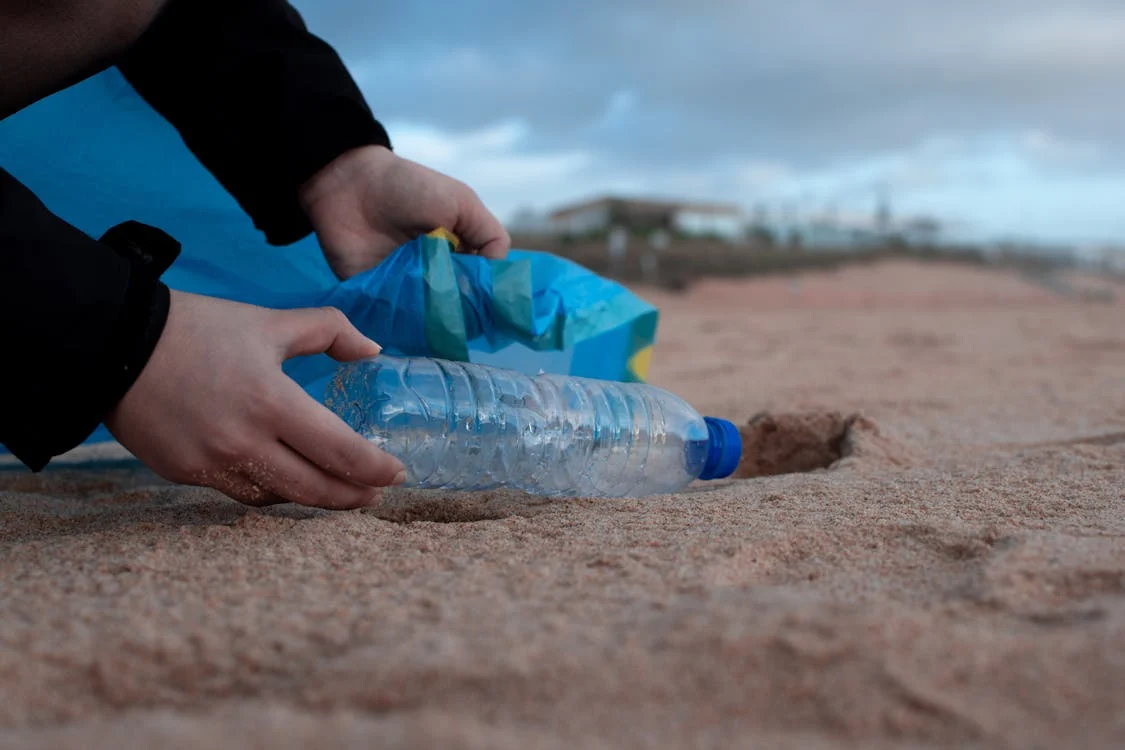The view out my window is of the majestic Rocky Mountains, a healthy deer population, and a man who comes every Tuesday to collect my trash and recyclables.
Despite residents recycling food waste, paper, plastic bottles, plastic bags, and corrugated boxes, recycling at this scale is ineffective against climate change.
Recycling facts suggest we recycle 9% plastic of the 15% of collected recyclables. Plastic containers create rivers of plastic that end up asocean pollution.
Recycling matters! A million tons of recycled paper or plastic containers save methane gas.
Top 12 Interesting Facts About Recycling
- The current US recycling rate is 21.4%
- At a 75% recycling rate, the U.S. could reduce CO2 as if 55 million cars were removed annually
- The recycling sector is valued at $200 billion in the US
- From 2019 to 2020, there was a 5.7% drop in overall plastics recovered for recycling in the US
- Recycling one ton of plastic saves 1,000-2,000 gallons of gasoline
- In 2022, the US cardboard recycling rate was 93%
- Recycling a glass bottle saves enough energy to light up a 100-watt light bulb for 4 hours
- For every ton of paper that is recycled, 17 fully grown trees can be preserved
- An aluminum can can be recycled and back on a store shelf in as little as 60 days
- Recycling creates 7-10 times more jobs compared to landfills and waste-to-energy plants
- Recycling cuts fossil fuel energy consumption and CO2 emissions
- The US recycles enough stainless steel annually to construct nearly 1,500 Gateway Arches
Recycling Facts
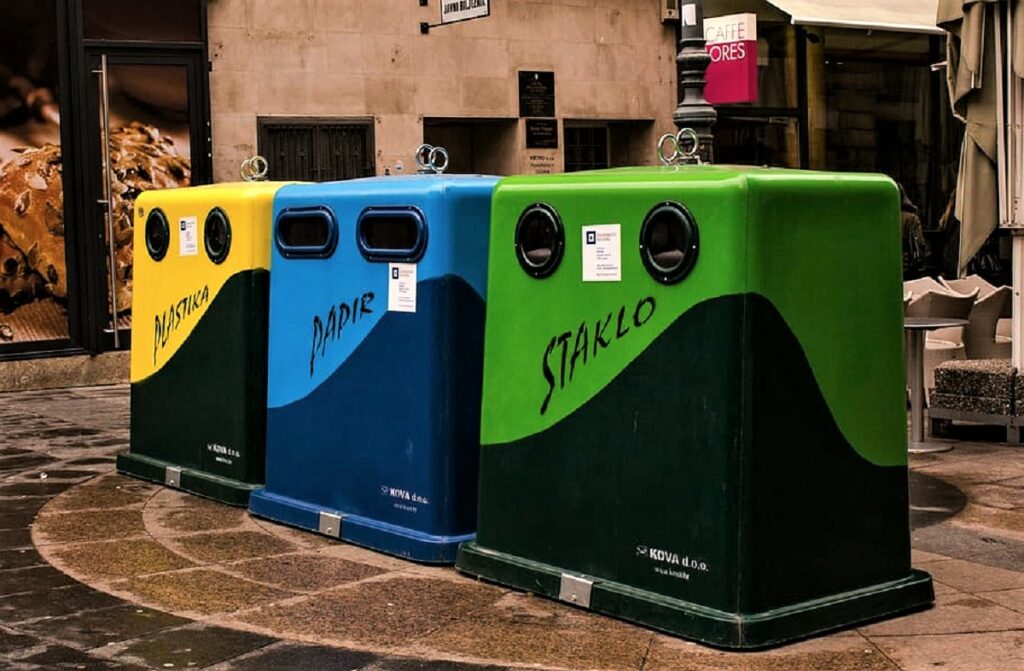
Recyclable materials create problems, and waste management companies must sort the waste stream, which becomes an expensive endeavor.
Recycling Is Key for Improving the Environment, Economy, Manufacturing Sustainability, and Preventing Ocean Waste (NIH)
Although the EPA Environmental Protection Agency is looking into ocean pollution, it hasn’t created an action plan. Our environment is struggling with the million tons of plastic waste choking waterways and devastating wildlife.
Recycling reduces fossil fuel use, carbon dioxide, raw materials, and waste management resources and saves twice as much energy.
The Current US Recycling Rate Is 21.4% (Recycle Across America)
A Yale University study found that Americans recycle 21.4%, although experts dispute this EPA-funded study and say it’s only 9%.
With Just 5% of the Global Population, the US Generates 811 kg of Municipal Waste per Capita (OECD)
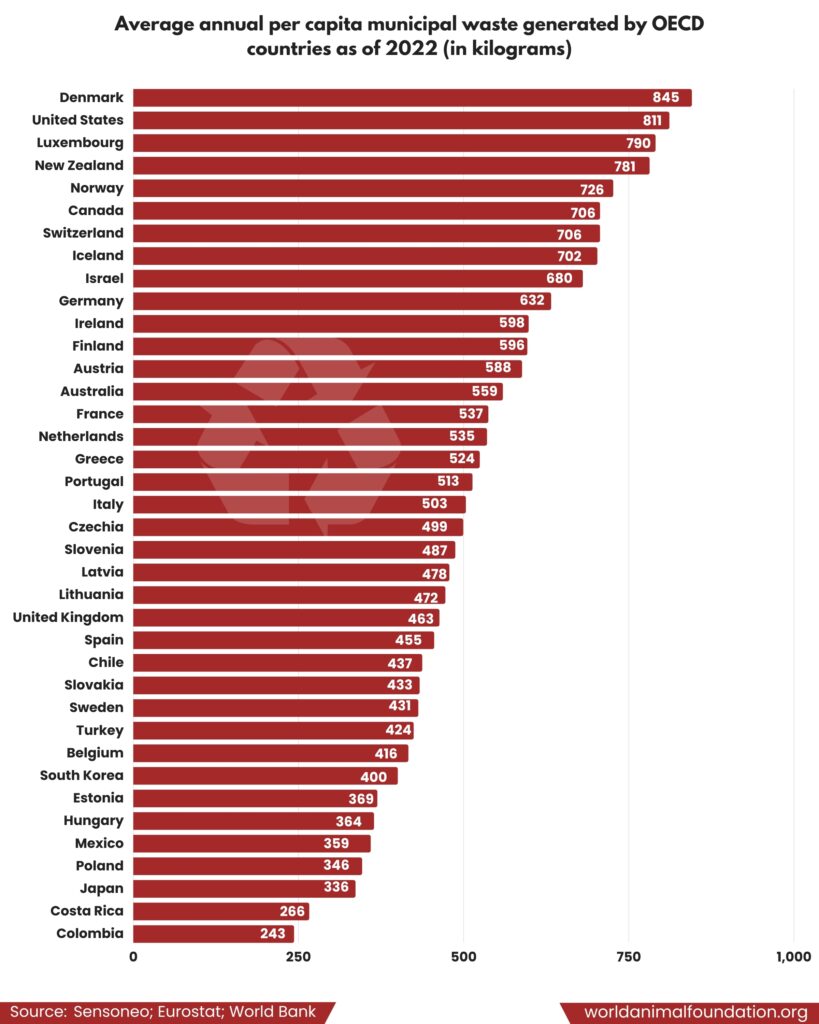
Americans lead with the highest GDP per capita, which means they can afford to buy stuff. An average person generates 811kg (1788 lbs) of municipal waste.
Prosperous countries generate and collect more and have sophisticated waste management systems, unlike less developed countries.
At a 75% Recycling Rate, the U.S. Would Have the CO2 Impact of Removing 55 Million Cars from Its Roads Yearly (Recycle Across America)
Americans can make a tremendous impact on CO2 levels, similar to banishing 55 million cars to the curbside.
The Nonprofit Label Initiative for Bins Is the Top Solution to Encourage Correct Recycling (Recycle Across America)
Recycling is confusing as many plastics and recycled cardboard don’t have standardized bin labels. One of the easiest methods to increase recycling stats.
The Recycling Sector Is Valued at $200 Billion in the US (Recycle Across America)
The American recycling industry is worth an estimated $200 billion. It creates more jobs than landfills and other related industries.
Plastic Recycling Facts
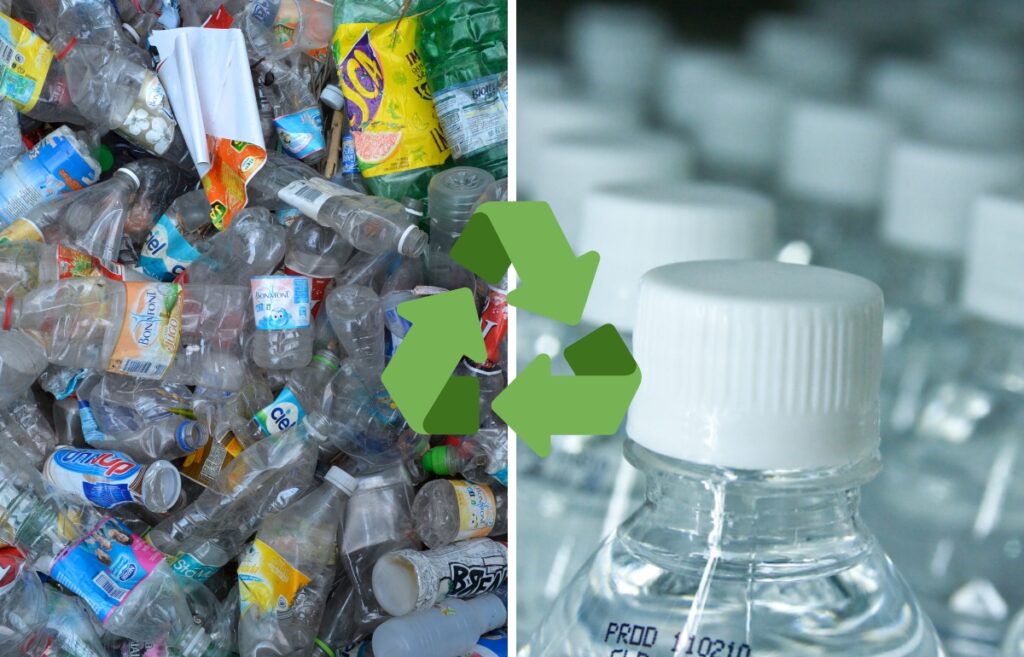
It’s heartbreaking that we can’t make recycling work.
From a Total of 400 Million Plastic Waste Generated, Only 9% of It Is Recycled (UNEP)
This 9% figure contradicts the EPA’s ballooned study. We incinerate 12% and recycle less than 10%. Where does the remaining 79% go?
More Than 1 Million Dollars Are Required to Recycle Plastic (Plastic for Change)
The start-up costs of recycling facilities can cost upward of millions. However, they can be highly profitable in communities.
Plastic Bottles Are Commonly Recycled into Lower-Grade Products like Carpets and Jacket Fiberfill (PBS.org)
Plastic has a bad reputation regarding environmental concerns. With the right recycling programs, we can turn recycled plastic into usable products.
Dirty Plastic Isn’t Recyclable (National Geographic Society Newsroom)
Here is the big catch to recycling plastics. Items must be cleaned before tossing them into the recycle bin—please.
Unfortunately, the Largest Dumping Site for Plastic Is the Pacific Ocean (Mangobay)
We’ve known about pollution facts yet: a toxic plastic soup is circling in massive gyres in five ocean locations—90% of marine trash is plastic.
10 Rivers Are Responsible for Almost 90% of Ocean Plastic Pollution (World Economic Forum)
The WEF data is outdated. A new source updated the research. According to a new study, 1656 rivers contribute 80% of the ocean plastic pollution
Original bad 10: Yangtze, Indus, Yellow, Hai He, Ganges, Pearl, Amur, Mekong, Nile, and Niger aren’t off the hook.
Real bad culprits: Pasig 6.43%, Klang 1.33%, Ulhas 1.33%, Tullahan 1.33%, Meycauayan 1.23%, Pampanga 0.95%, Libmanan 0.72%, Ganges) 0.63%, Rio Grande de Mindanao 0.54%, Agno 0.47%. Seven of these rivers are in the Philippines.
Annually, There Are Enough Plastic Bottles Thrown Away to Circle the Earth Four Times (National Geographic)
Picture a turtle with a straw stuck in its nostrils or a dead whale wrapped in fishing lines. That’s because humans toss enough plastic beverage bottles by littering to circle our beautiful planet four times.
Every Hour in the US, Almost 2.5 Million Plastic Bottles Are Thrown Away (Recycling Across America)
Plastic is a versatile material. When it’s carelessly tossed and not recycled, it harms the environment, wildlife, and human health.
The Recycling Rate for Disposable Water Bottles in the US Is Just 12% Annually (Insider)
We need to improve this poor performance number—only 12% is laughable.
From 2019 to 2020, There Was a 5.7% Drop in Overall Plastics Recovered for Recycling in the US (The Association of Plastic Recyclers)
In 2020, Americans recycled 290 million pounds less. That means more bottles, rigid plastics, film, and other plastic products are in our landfills and oceans.
Plastic Bags Require Almost 1,000 Years to Decompose (ACS Publications)
There are many confusing stats about the American waste stream of plastics, recycling, and how long it takes for plastic to decompose. Plastic bags require many decades or even centuries to decay.
Recycling One Ton of Plastic Saves 1,000-2,000 Gallons of Gasoline (Recycle Across America)
Establishing healthy recycling practices means contributing to the sustainability of natural resources and reducing fossil fuels and air pollution. Recycling 1 ton of plastic bottles saves energy equal to a two-person household’s one-year usage.
Cardboard Recycling Facts
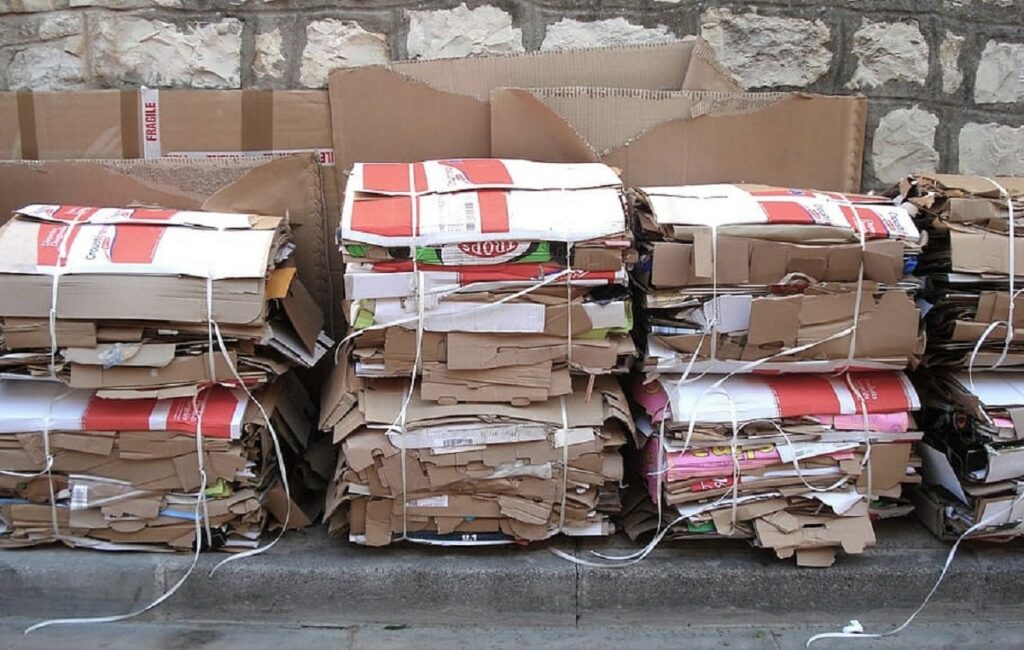
Around 100 Billion Cardboard Boxes Are Manufactured Annually in the U.S. (Eco Redux)
Every cardboard box is 100% recyclable, regardless of its condition.
In 2022, the US Cardboard Recycling Rate Was 93% (Recycling Products)
From 2019 to 2025, the U.S. paper industry has planned to invest $7 billion in manufacturing, utilizing 9 million tons of recycled fiber.
A Recycling Rate of 70% Is Achieved for Corrugated Cardboard (Waste Management)
Most of the boxes are made from recycled materials or leftovers from the lumber industry byproducts, like sawdust and wood chips.
Cardboard Recycling Consumes Just 75% of the Energy Compared to Creating New Cardboard (Weston.org)
The nature of cardboard allows it to be recycled seven times, consumes only 75% of the energy, and can be repurposed in 14 days.
Recycling a Ton of Cardboard Preserves 46 Gallons of Oil and Conserves 9 Cubic Yards of Landfill Area (PCRB)
Cardboard recycling generates less than 50% of the amount of sulfur dioxide compared to producing new cardboard from raw materials.
Glass Recycling Facts
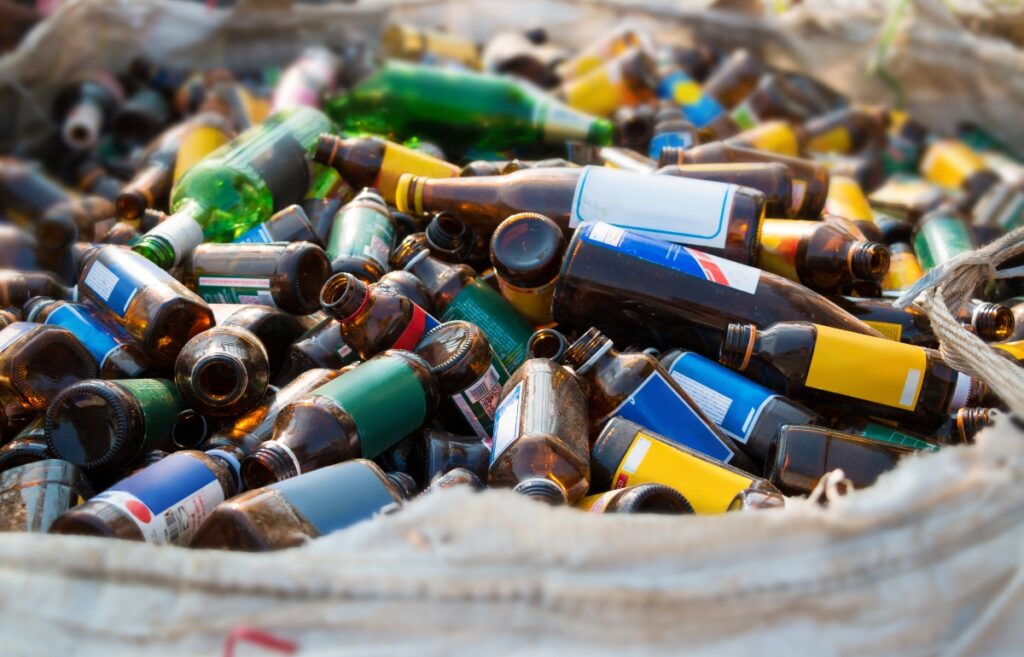
Glass is a beautiful and enduring substance.
Glass Is 100% Recyclable (Glass Packaging Institute)
Glass is a natural material made from sand, soda ash, and limestone. One glass bottle is always 100% recyclable.
Annually, More Than 28 Billion Glass Bottles and Jars Are Dumped in Landfills (Recycle Across America)
Recycling glass reduces water pollution by 50%. Glass can be recycled and re-manufactured an infinite amount of times and never wears out. Even when glass shatters, it can be remade into something practical in 30 days.
Recycling a Glass Bottle Saves Enough Energy to Light Up a 100-Watt Light Bulb for 4 Hours (Nurture Nature Foundation)
Worldwide, we’re experiencing power outages. By recycling a glass jar, we’re turning on a 100-watt bulb. These recycling comparisons connect people with the impact they make when they toss a plastic or glass bottle into the trash.
Paper Recycling Facts
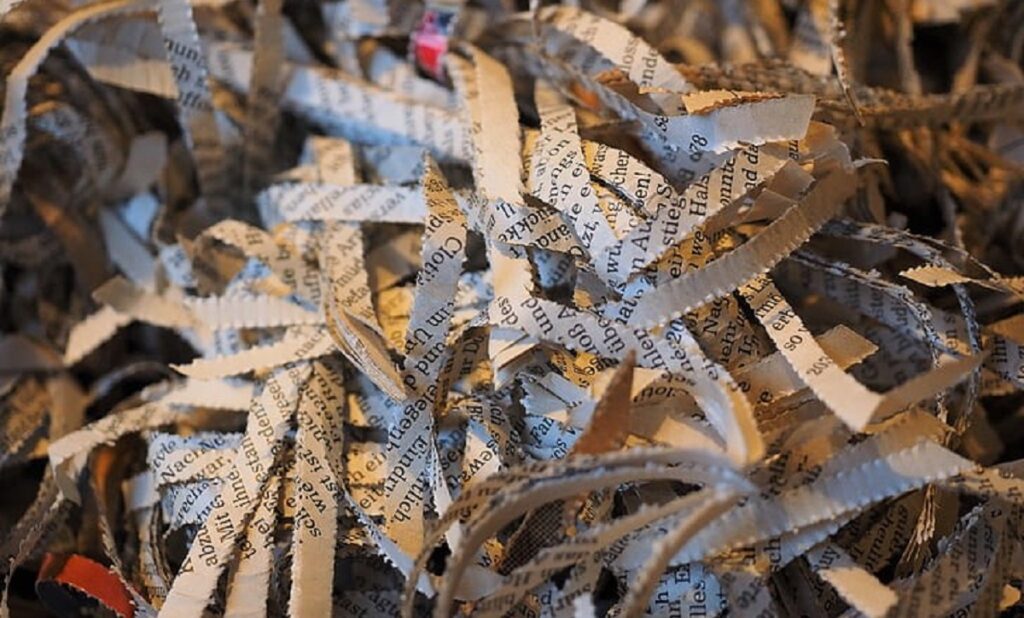
Seriously, we’ve been recycling paper since 200 B.C. So why can’t we recycle plastic?
Almost 85 Million Tons of Plastic Is Utilized by Americans Annually (Smithsonian Magazine)
Only two million tonnes out of 40 million tonnes were recycled in 2021. Let’s prevent 85% of unrecycled plastics from going to landfills or incinerators.
Recycling plastic saves carbon dioxide emissions and natural resources
Roughly 1 Billion Trees’ Worth of Paper Are Discarded Annually in the US (Florida Institute of Technology)
Americans recycle paper and corrugated paperboard at about 68%. Sadly, deforestation destroys 27 million acres of rainforest yearly.
On Average, a Single Office Employee Utilizes 10,000 Paper Sheets Annually (University of Illinois)
Why is an average office worker generating so much paper waste? Americans consume 30% of the world’s paper supply.
For Every Ton of Paper That Is Recycled, 17 Fully Grown Trees Can Be Preserved (Byjus)
Recycled paper and corrugated cardboard spare the life of 17 trees and 1½ cups of water per sheet.
Around 7,000 Gallons of Energy Is Saved by Recycling 1 Ton of Paper (US EPA)
When we recycle just one ton of paper, we save energy, 40% of wood pulp, and air pollution.
Aluminum Recycling Facts
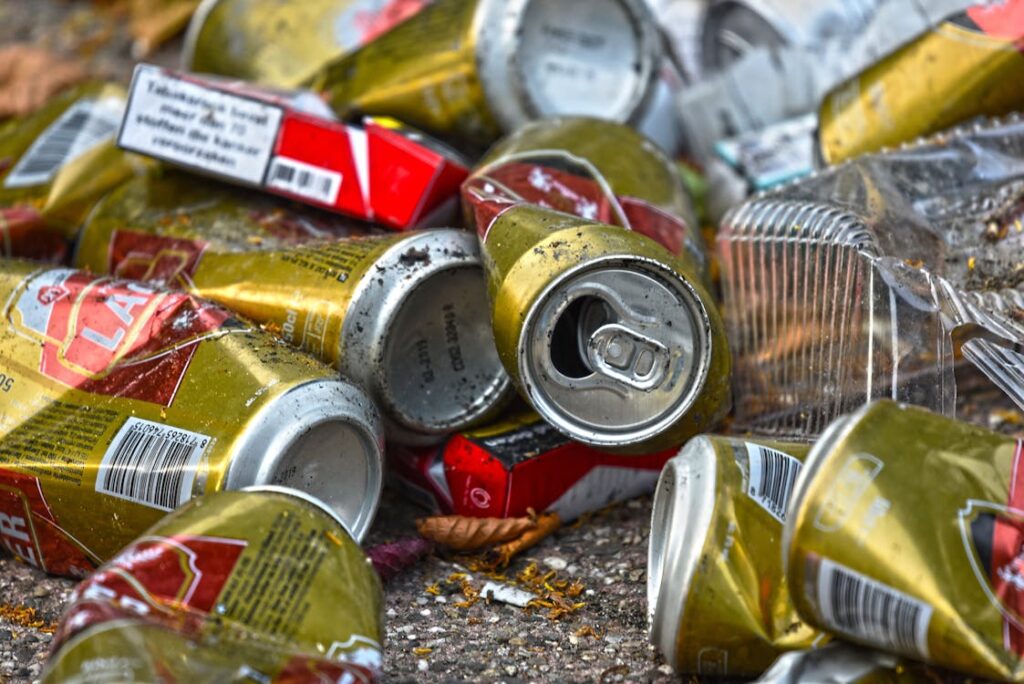
Like glass, aluminum has an indefinite shelf life.
Aluminum Can Be Recycled Infinitely Without Any Degradation in Quality (The Verge)
Aluminum canned water is the new go-to, supposedly. The beauty of this shiny metal is that it can be crushed and recycled and retain its quality.
CRI Estimates That 36 Billion Landfill Aluminum Cans Last Year Were Worth Over $600 Million Scrap Value (CRI)
Beverage container deposits and a progressive mindset might save 36 billion aluminum cans from landfills and create jobs in the scrap recycling industries.
In a Lifetime, the Average Individual Can Recycle Over 25,000 Cans (Recycle Across America)
Those 25,000 cans are worth a small fortune. Over 20 years, Americans tossed $12 billion dollars in the trash—ludicrous!
An Aluminum Can Can Be Recycled and Back on a Store Shelf in as Little as 60 Days (Maine.gov)
Like glass, aluminum quality doesn’t deteriorate when recycled.
Aluminum Can Be Recycled With Just 5% of the Energy Needed to Create It From Raw Material (EPA)
One minute, it’s cola; the next, a new Gen Z-specific wine cooler in a can. Aluminum recycling only requires 5% of equivalent energy usage.
Recycling One Aluminum Can Conserve Enough Energy to Operate a Television for 3 Hours (Mga.edu)
Recycled aluminum can power your favorite Netflix show for three hours or get you to the mall and back on half a gallon.
Food Recycling Facts
Many nations struggle to produce enough food, and 345 million people experience food insecurity.
Almost 30-40% of the Food, Around 133 Billion Pounds in the US Is Wasted Annually (USDA)
This statistic is tragic. Americans throw 133 billion pounds of food into the trash. Within the food supply chain, 30 to 40% is wasted.
As Per EPA, Food Waste, Comprising Almost 25% of Municipal Solid Waste, Is the Foremost Item Sent to Landfills (EPA)
In a study from California, Nevada, and Hawaii, the EPA estimates that 25% of municipal waste is from food waste.
Food Scraps Constitute Nearly 11% of the Municipal Solid Waste Produced in the U.S. (EPA)
Food scraps and food waste facts show that they are two different things. Scraps form the unusable portions of food and, according to food waste statistics, don’t need to go to the landfill.
Food Waste in the U.S. Is Valued at Over $161 Billion Annually (FDA)
Many poor American families struggle to survive. Yet, food waste in the USA has a $161 billion value. That means the 11.6% living in poverty didn’t need to go hungry.
Food Waste Can Be Composted, Sold to Farmers, or Used as Animal Feed If It Meets Regulations (MDPI)
Food waste can be repurposed in eco-friendly and innovative ways to produce valuable items like compost, bioethanol, biogas, animal feed, and thermal energy.
Fun Facts About Recycling
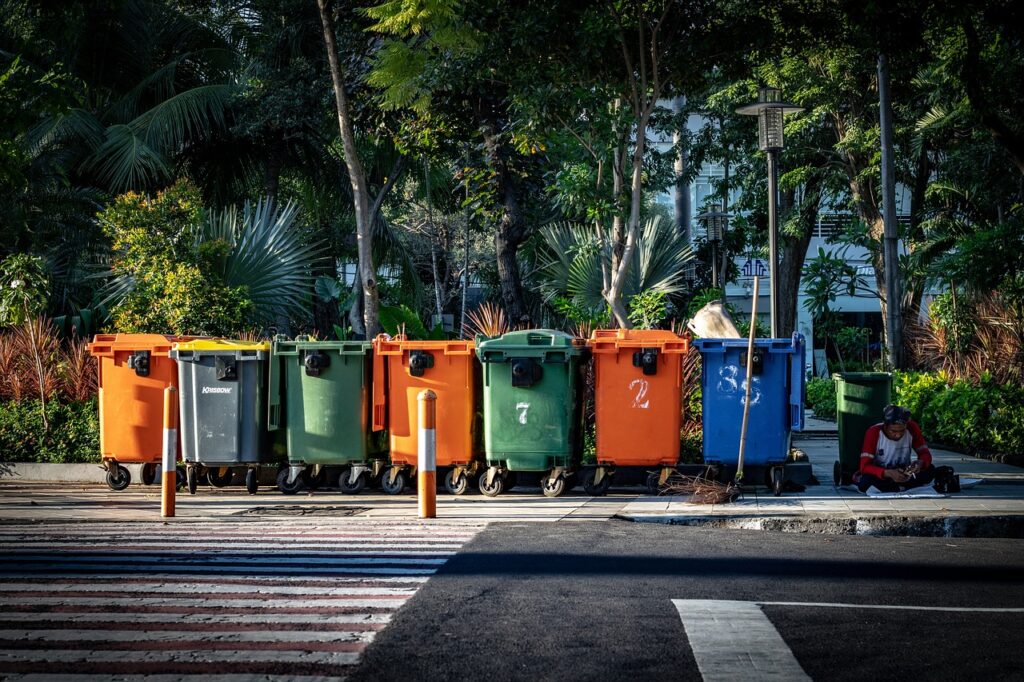
These fun facts aren’t funny:
Annually, More Than 11 Million Tonnes of Textiles End Up in US Landfills (EPA)
To save textiles from landfills, buy quality over quantity and shop at thrift stores. The recycling rate for textiles in 2018 hovered just below 15%, and only 2.5 million tonnes were recycled.
Every Year, 25 Billion Styrofoam Coffee Cups Are Discarded by US Citizens (Sustainable Business Toolkit)
Mythbuster—styrofoam is recyclable. However, the US recycled less than 4%.
Globally, Around 20 – 50 Million Metric Tons of Electronic Waste Are Disposed of Annually (Global E-Waste Monitor)
In 2019, we generated nearly 54 million metric tonnes of electronic waste, a 21% increase over five years.
Electronic Waste Accounts for Around 2% of the Waste Stream in the United States (IDR Environmental Service)
It’s cheaper to buy a new gadget than to fix a broken one. That sad reality creates 9 million tonnes of electronic waste and fills our landfills.
The EPA Suggests That 75% of US Waste Is Recyclable, Yet Only 20 – 30% Is Recycled (EPA)
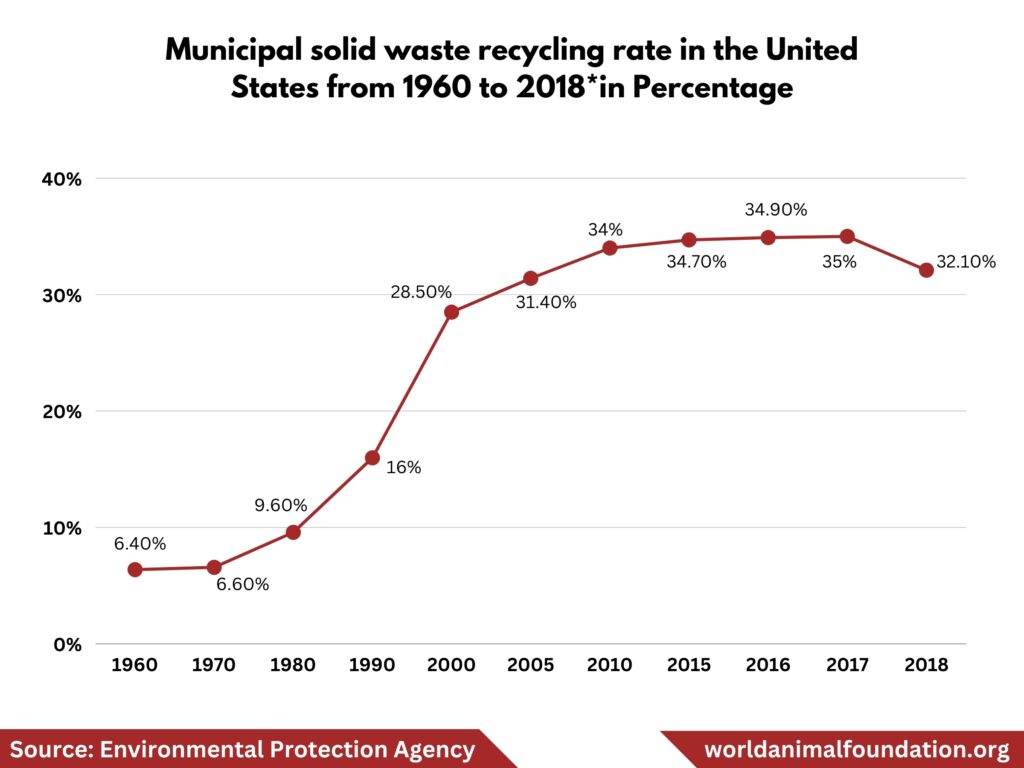
The EPA suggests many things, yet overall, Americans recycle 20 to 30%, and 75% of landfill waste is recyclable.
During the Holiday Season, Americans Produce an Extra 5 Million Tons of Waste (Medium)
Americans have a rich tradition of celebrating their holidays with lavish meals. Between Thanksgiving and New Year’s, Americans generate 5 million tons of food waste.
Almost 94% of the US Population Can Access Some Form of Recycling Program (ACP)
Although the US doesn’t have a unified state-regulated (un-Amercian) recycling program, nearly 94% of Americans have a recycling bin at their fingertips.
In an Average Year, the Discarded Waste From Americans Could Circle the Earth 24 Times (World Counts)
We generate 2.22 billion tons of garbage. If we loaded it on trucks, and we do, we can circle the world 24 times. Fantastic!
Recycling Trash Costs $30/Ton, Landfill Disposal Is $50, and Incineration Ranges From $65 to $75 (HWH Environmental)
Recycled trash costs less. Food packaging creates 67% of street litter and costs $11 million to clean. However, most of it ends up in rivers and oceans.
Recycling Statistics
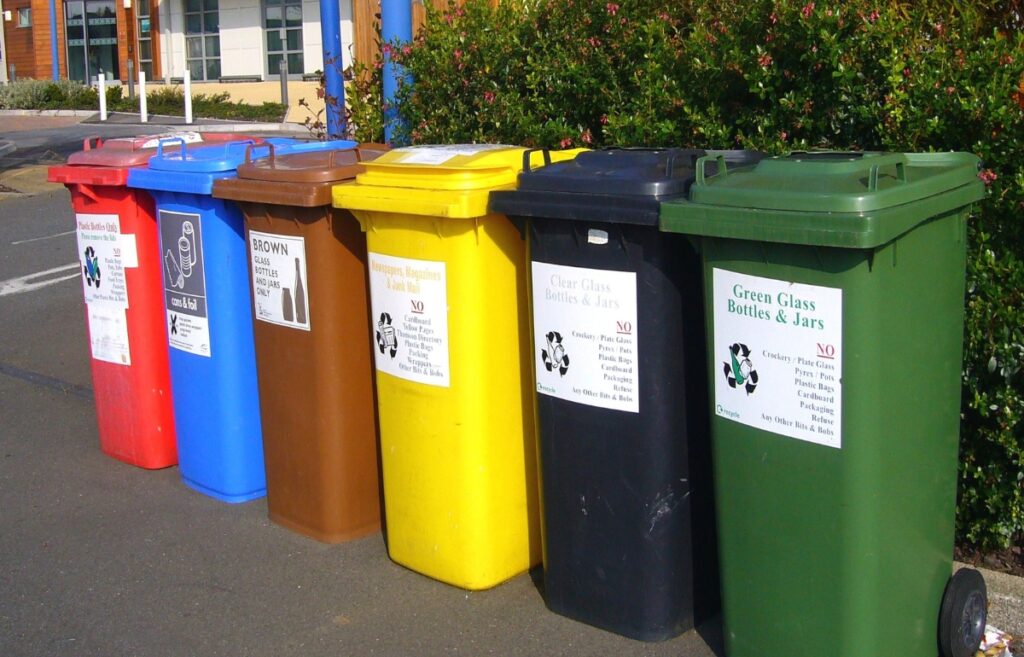
It doesn’t take much to recycle and help clean the planet.
The Use of Standardized Labels Has Been Shown to Boost Recycling Rates by 50-400% (Recycle Across America)
It’s true recycling can be confusing, but with standardized labels, it’s gotten easier and helped to increase recycling commitment by 50 to 400%.
Recycling Creates 7-10 Times More Jobs Compared to Landfills and Waste-to-Energy Plants (Recycle Across America)
That’s the kicker. Recycling is a multibillion-dollar industry. It generates more jobs and over $200 billion in revenue.
Recycling Saves Up to 95% of Freshwater During Material Mining and Manufacturing (Monroe County MI)
Recycling conserves 95% of freshwater and stops recyclable waste from entering our oceans and harming animals and human health.
Recycling Halts the Oceans From Getting Polluted Further (Scientific American)
It’s a sad fact that recycling doesn’t solve the multi-million tons of plastic problem. But until we discover a sustainable solution, we should try everything to keep plastic from entering our oceans.
Recycling Cuts Fossil Fuel Energy Consumption and CO2 Emissions (IEA)
Recycling costs us and the environment less in fossil fuel consumption and CO2 emissions. It’s a win-win.
Recycling Preserves Forests, Aiding in CO2 Emission Reduction (UNFCCC)
Recycling lessens our carbon footprint. Forests are part of a global carbon cycle.
Countries like Pakistan, Brazil, Indonesia, and India have prolifically high deforestation rates. For example, Pakistan lost half its 5% forest cover and increased greenhouse gas emissions by 3%, while the Amazon Rainforest has lost 20%.
Global Waste Will Double Within a 15-Year Span (ISSUU)
Waste management is problematic in developing nations, and globally, waste will impact human health, the environment, drinking water, and the animal kingdom.
Recycling Information
Recycling isn’t difficult, and many everyday items can successfully be recycled.
- Paper/Cardboard
- Plastics like beverage and food containers
- Glass like wine bottles, soda,
- Aluminum cans
- Batteries
- Electronics like computers and phones
- Food scraps and waste
- Yard waste
- Used oils
- Hazardous household materials
- Tires
- Assorted metals
- Miscellaneous
Recycling Facts for Kids
Children learn by example and play a vital role in the success of recycling.
Almost 5 Pounds of Trash Is Generated by a Person Daily (EPA)
Americans are beginning to recycle, but only 94 million tons of waste. Over the last 38 years, we’ve improved our recycling contributions by more than 300%.
The Amount of Plastic in the Ocean Exceeds the Number of Stars in the Milky Way (UNN News)
If we don’t recycle, we create problems in the environment and our families. Although Earth is big, right now, there are 51 trillion microplastics floating in our ocean.
Recycling of Plastic in the U.K. Is Below 50% (Pro-Environmental Service)
What a sad response, considering someone comes to your door to remove your recycling bins. Landfills and incinerators offset this sad 50% of recycled materials.
Cardboard Boxes Can Undergo Recycling Up to Seven Times (Lee County Southwest Florida)
Kids love recycling cardboard boxes, and this fact should perk them up!
Annually, 2.4 Million Tons of Recycled Glass Is Utilized to Manufacture New Bottles and Jars (NERC)
Recycled glass is good for the environment and reduces energy use and emissions.
Annually, the U.S. Recycles Iron and Steel Scrap Equivalent to Over 900 Golden Gate Bridges in Weight (Social Recycle It)
Iron and other metals are the most frequently recycled and upcycled materials in the world. Scrap metals are reconfigured into bridges and shipping containers.
The US Recycles Enough Stainless Steel Annually to Construct Nearly 1,500 Gateway Arches (DKMM)
The iconic St. Louis Arch uses more stainless steel than any other historical construction project. American industries recycle enough stainless to build 1,500 Arches, each using 900 tons of stainless steel.
FAQs
Approximately How Much of Our Trash Ends Up in a Landfill? 90%, 75%, 55%, 20%?
According to the EPA, almost 55% of our trash ends up in landfills
Americans Dispose of How Much Municipal Solid Waste Each Year?
It’s a problematic pile of waste to imagine, but the EPA says the figure is 292.4 million tonnes.
How Much Waste Is Produced Every Year?
Worldwide, people produce 2.01 billion tonnes of municipal solid waste (MSW), and at least 33% isn’t disposed of in an environmentally safe way.
How Much Waste Does a Human Produce per Day?
The average person in America produces almost 5 pounds of waste every day.
How Many People Recycle in the World?
That is impossible to answer. However, stats suggest that only 9% of plastics are recycled from the 15% of recycled material.
In the United States, the Biggest Component of Household Trash by Weight Is?
Food waste in America contributes 24% to household trash.
Conclusion on Recyclable Materials
I can contribute more to recycling practices and encourage the average person to help save a million tons of waste streams from entering our ocean and landfill space. Making small changes and ending plastic pollution to save energy and wildlife is doable.


